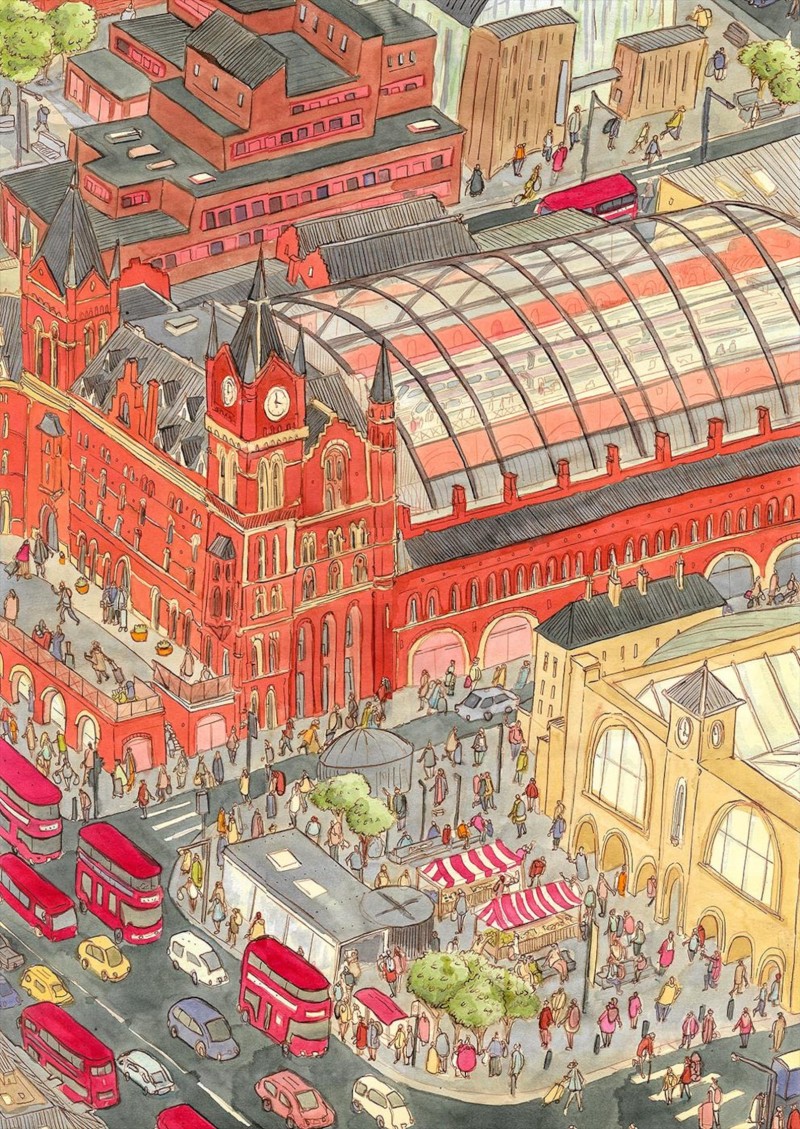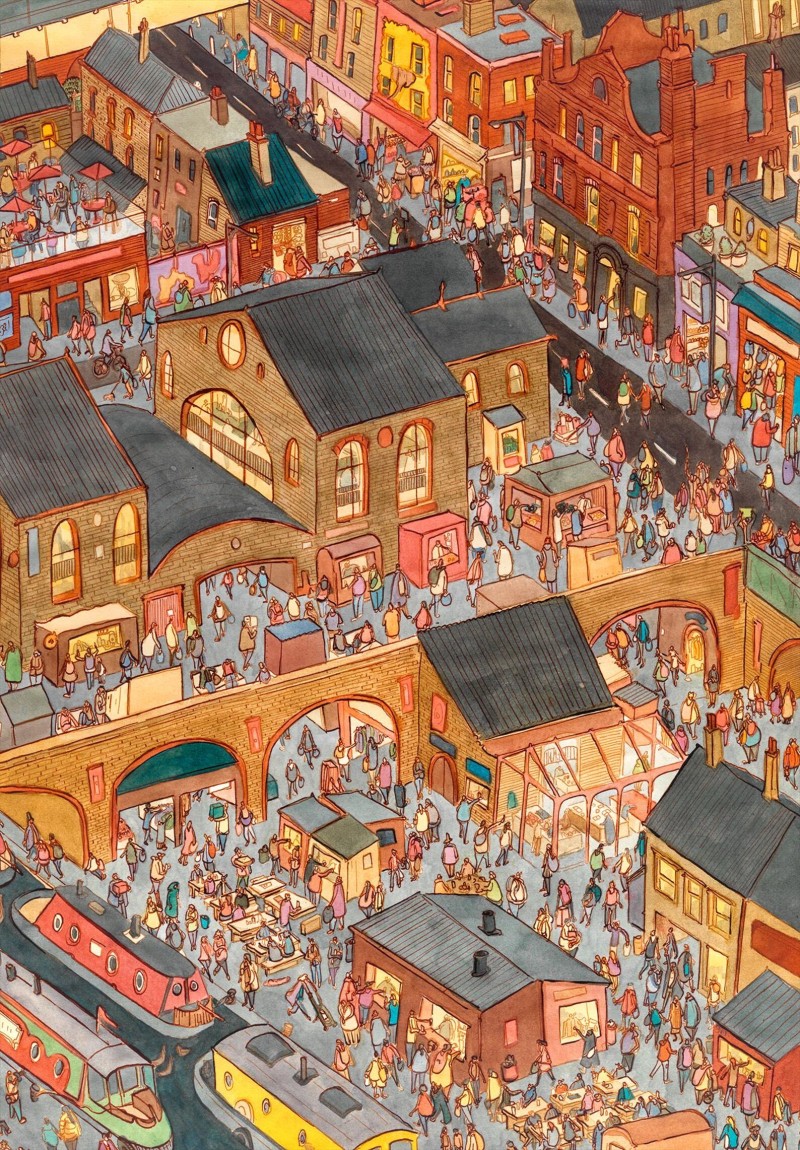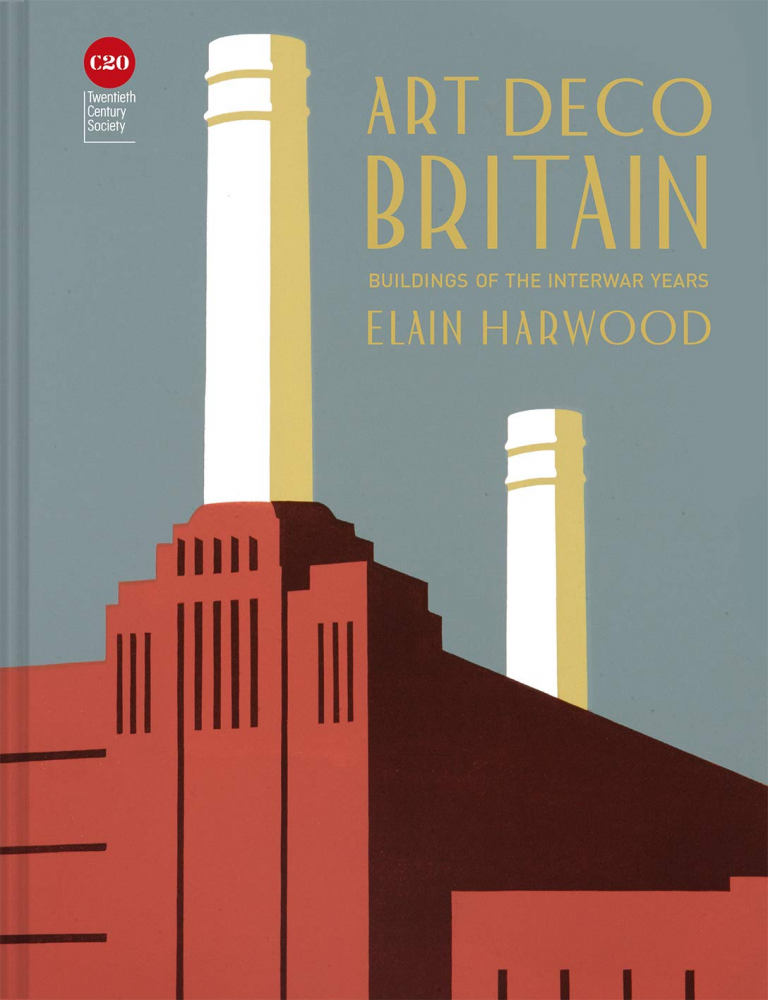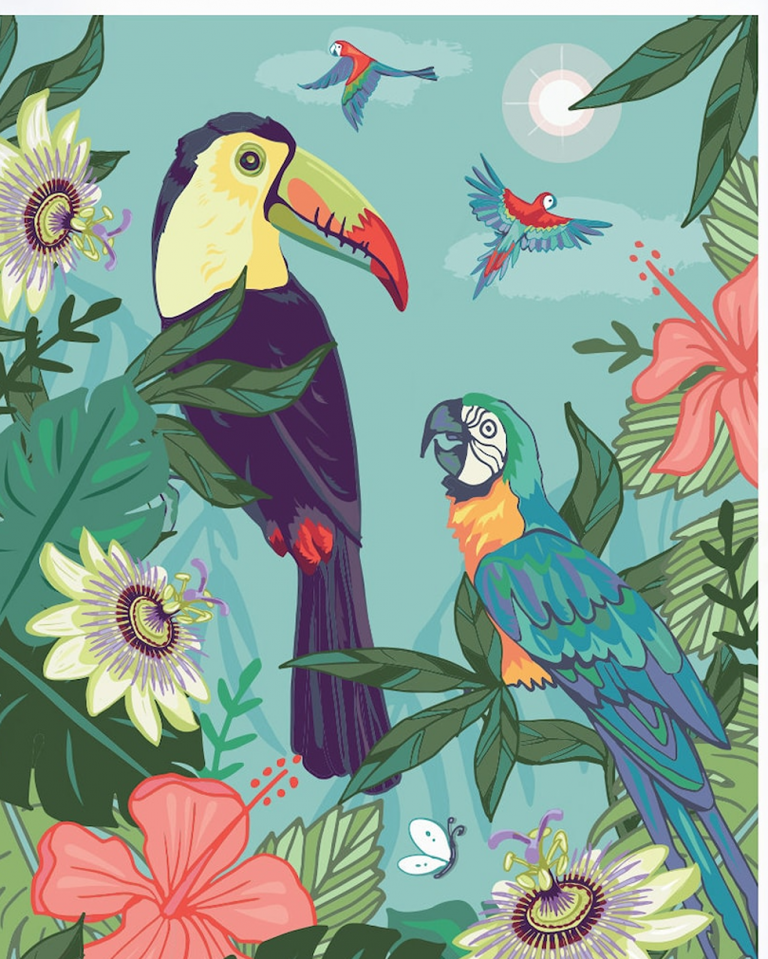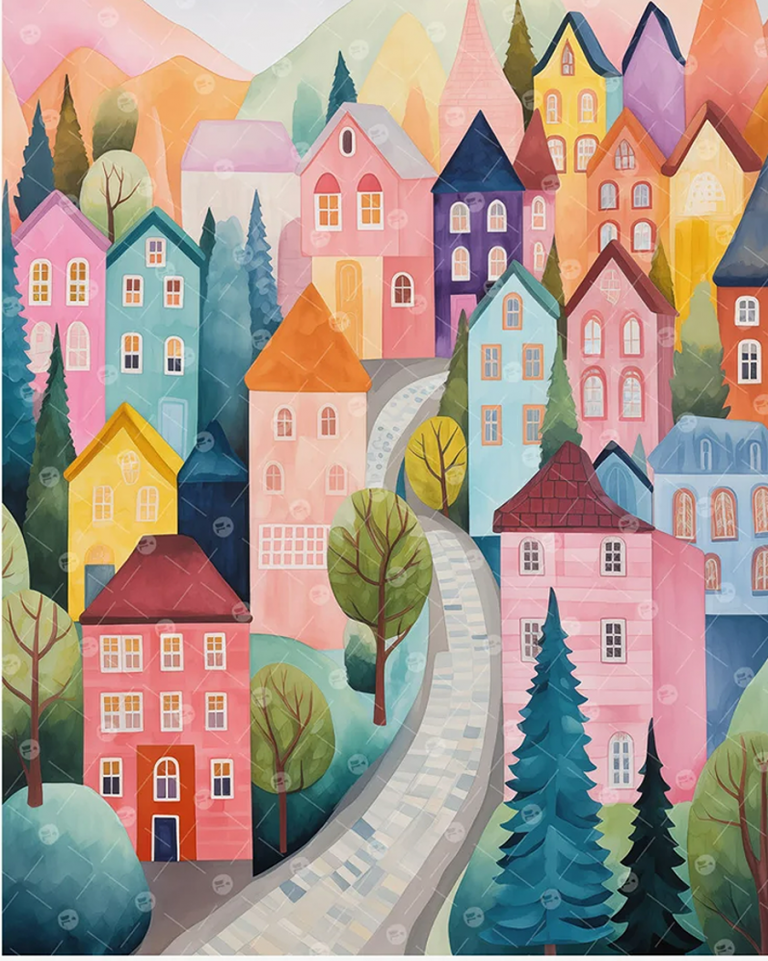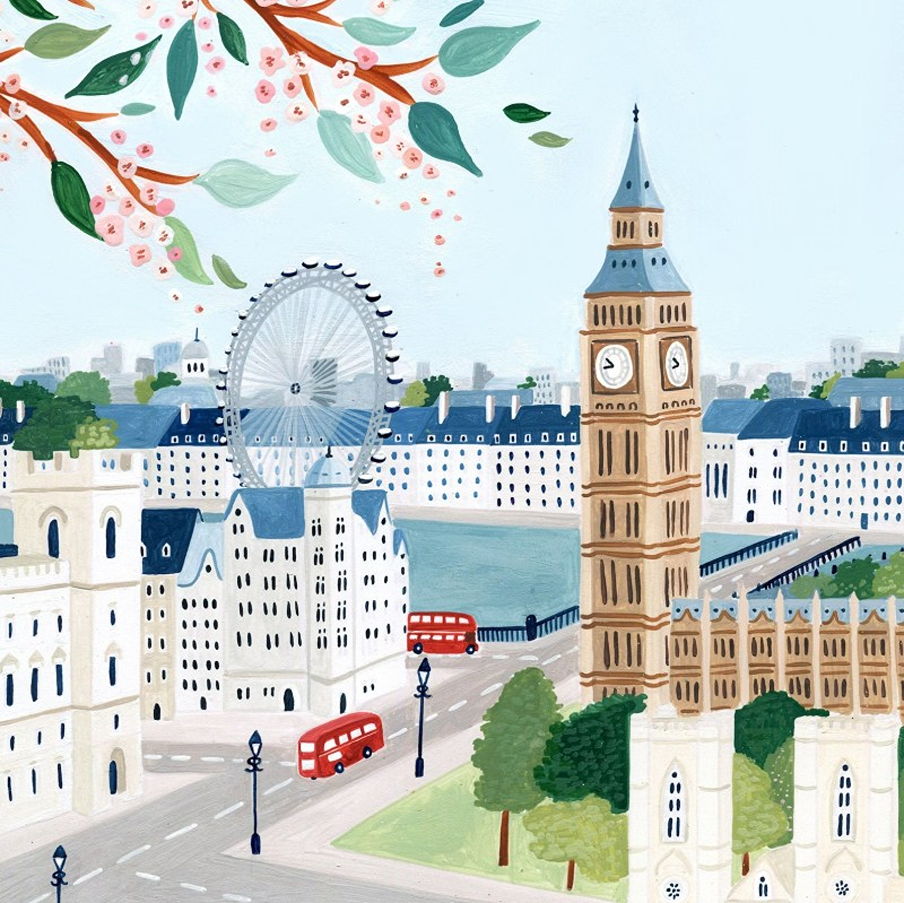
London buzzes with life every hour of the day. It’s a huge city, built from 32 boroughs and the historic City of London, each with its own style. One minute you’ll pass shiny new buildings, the next, a row of Victorian terraces or the quiet of a leafy park.
There’s always something going on here. This post takes a good look at what keeps London ticking: the parks, the people, the iconic Tube, and the character of each neighbourhood. If you want to get a feel for real London life, you’re in the right place.
If walking in nature, always follow the Countryside Code, to keep dogs and barnyard friends safe.
Also read our posts on:
Getting Around London
Getting from one part of London to another is part of the city’s daily rhythm. The upside? You rarely need a car. Most Londoners rely on their legs and the city’s tangle of trains, buses, and of course, the famous Underground. Each system has a story and, together, they make London feel smaller and more connected, no matter how huge it is.
The Pulse of the City: Walking and the Streets
Even with all the trains and buses, much of London is best seen on foot. Walking is the heartbeat of daily life, especially in the city centre. Busy pavements wrap around historic sites, trendy shops, and every kind of café you can imagine.
You’ll notice right away: some of the best sights are stumbled upon by accident. Landmarks like Covent Garden, Soho, or the South Bank flow into each other. In many central neighbourhoods, you can walk from one famous area to the next in just minutes:
- City of London (the Square Mile): Old cobblestones sit next to shiny glass towers.
- West End: Theatres, shops, and markets draw crowds day and night.
- Bankside and Southwark: Street art, the Tate Modern, and food markets wait around every corner.
Walking means you catch street performers, discover new cafés, and maybe find your new favourite pub. London’s streets are packed with stories from every era, making the journey part of the fun.
The London Underground: Fast Tracks Below the City
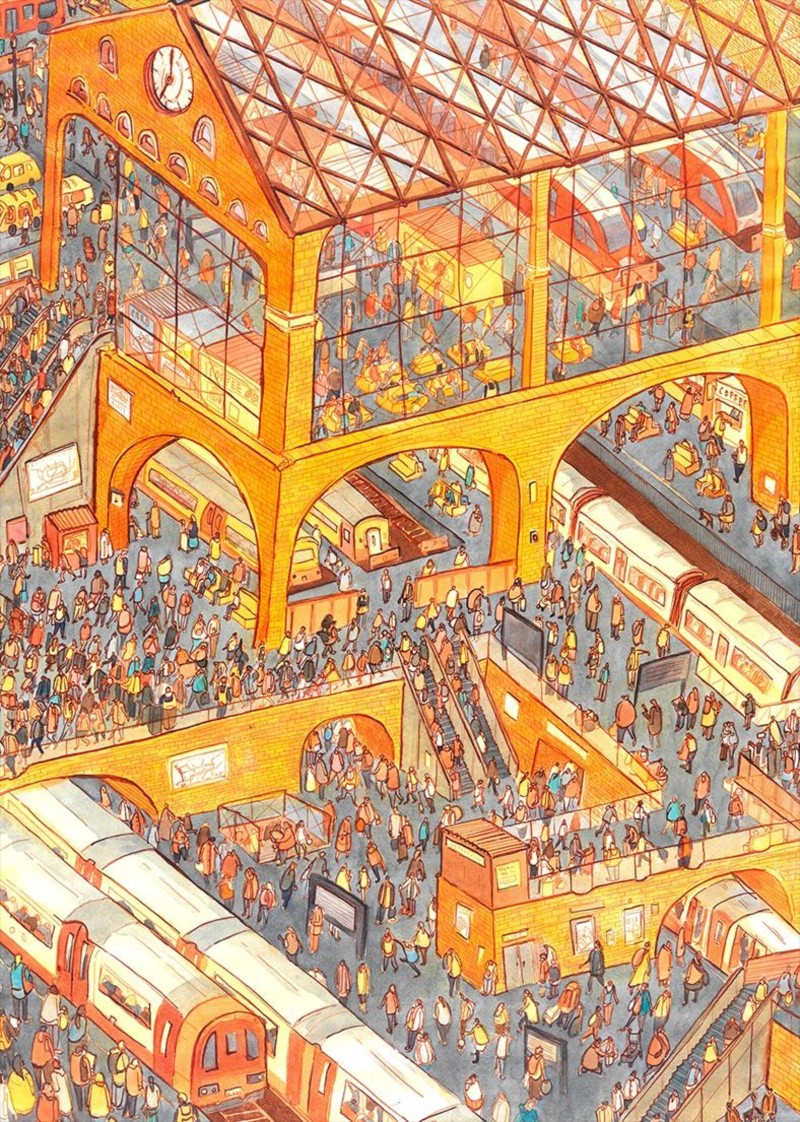
If you’re in a hurry or it’s pouring rain, the Underground (or “the Tube”) is your ticket. It’s the world’s oldest underground train system, running since 1863. The Tube now stretches over 250 miles of track and links most areas, from Heathrow Airport to Hampstead.
The map looks like a bowl of colourful spaghetti, but it’s easier than it seems. Trains run every couple of minutes in central London, so there’s not much waiting for the next one.
- Iconic Map: The Tube map, originally drawn by Harry Beck in the 1930s, uses bright lines and simple stops. It’s a London icon and often copied by other cities.
- Key Lines: The Central, Piccadilly, Northern, and Jubilee lines hit many of the city’s biggest spots.
- Easiest Way to Travel: Most locals tap in and out with an Oyster card or contactless bank card—no need for paper tickets.
Using the Tube is straightforward once you get the hang of it. Each line and station is well marked, and there’s support for visitors almost everywhere. Even if it’s your first visit, you’ll blend in with commuters by the time your train leaves the platform.
Connections: Buses, Trains, and Seamless Travel
London’s not just about the Tube. Buses (those bright red double-deckers) cover the whole city. Overground trains and the Docklands Light Railway (DLR) pick up areas the Underground misses. The city’s public transport all connects with little effort.
Here’s what makes it all work together:
- Buses run day and night, even when the Tube closes for a few hours after midnight.
- Overground and DLR trains link places from Hackney to Woolwich, both fast and direct.
- Travel Cards (like Oyster), and contactless cards let you move between buses, trams, trains, and the Tube without fuss.
The Big Parks: London’s “Back Gardens”
Let’s start with the heavyweights. These parks are more than patches of grass; they’re whole neighbourhoods of nature in the centre of the city. Locals walk dogs, picnic, play football, or just sprawl out with a book when the sun appears. Read our post on green spaces in London to learn more.
- Hyde Park: Right in central London, Hyde Park stretches out over 350 acres. It’s famous for its lakes, open meadows, and the quiet of the Rose Garden. You can rent a rowing boat, watch swans, or cycle from Bayswater to Knightsbridge without ever crossing a busy road.
- Hampstead Heath: North of the city, “the Heath” feels wild and untamed, even though you’re a short Tube ride from lively Camden. Wooded hills, sprawling fields, and hidden swimming ponds give this spot a countryside feel. On a sunny day, the view from Parliament Hill reminds you how green London really is.
- Richmond Park: Head to the southwest and get greeted by herds of wild deer. At 2,500 acres, it’s the largest Royal Park in London. Cyclists, horse-riders, and hikers love these rolling hills and ancient trees.
- Regent’s Park: Just north of the West End, this park is home to gardens, sports fields, and the famous London Zoo. It’s perfect for a morning jog or a lazy afternoon among the flowerbeds.
- Greenwich Park: Perched above the Thames, Greenwich Park serves up skyline views and deep history. The Royal Observatory and vast chestnut avenues make it a draw for both science buffs and picnic fans.
Locals depend on these parks the way some might rely on a back garden. They’re places to breathe, recharge, and swap the sound of sirens for birdsong—if only for an hour or two.
Small Parks, Hidden Corners, and Community Gardens
Not every green space needs to cover acres. Some of London’s best “parks” are tiny squares tucked between terraced houses or hidden behind busy streets. These spots may be small, but they’re packed with character.
- Postman’s Park: Near St Paul’s Cathedral, this quiet spot is famous for its touching memorials to heroic Londoners.
- Phoenix Garden: Off busy Charing Cross Road, Phoenix Garden provides an oasis of flowers, frogs, and bees. Volunteers keep this patch thriving, showing how London’s green spaces are as much about people as plants.
- Community Allotments: Across London, locals dig, plant, and grow veggies in shared allotments. Some, like Brockwell Park Community Greenhouses, welcome visitors for workshops and plant sales.
- Sky Parks and Rooftop Gardens: London’s going upwards. Rooftop gardens like the one atop the Southbank Centre, or the Sky Garden in the City, offer flowers and fresh air with a view.
Every borough offers a blend of these spaces—sometimes you find a quiet square just by wandering with your phone away and your eyes up. These small parks and gardens often connect neighbours and bring wildlife back to the heart of the city.
Street Trees: The Unsung Heroes
It’s not just parks that make London green. Street trees line most London roads, softening the brick and concrete with stretches of leafy shade. In the heat of summer, you’ll thank the wide canopies for cool relief as buses rumble by.
- London has over 8 million trees, with many along city streets.
- Common species include London plane, oak, lime, and hornbeam.
- These trees don’t just look good; they trap dust, cool the air, and cut pollution step by step.
Some streets are so tree-lined they feel like tunnels after rain, the green leaves glowing under streetlights. Kids kick fallen conkers each autumn, while in spring, blossom drifts down outside corner shops. For people living in flats, street trees often give the only touch of nature outside.
Connecting Communities with Walking Paths and Green Links
London is a city best experienced on foot, and its green corridors make that walk even better. Footpaths, towpaths (along canals and rivers), and old railway lines link up parks, estates, and high streets.
Some favourite routes include:
- The Regent’s Canal: Walk or cycle from Paddington to Limehouse, passing houseboats and waterbirds along old towpaths.
- The Green Chain Walk: This signposted route in South East London stretches for miles, threading together woods, commons, and quiet parks from Thamesmead to Nunhead.
- Thames Path: A path that hugs the river for miles, going past famous sights and lesser-known wildlife reserves.
These green links help bind neighbourhoods together. They invite people to wander further, side-step main roads, and see parts of London they might miss from a bus or Tube train. They’re a lifeline for runners, cyclists, dog-walkers, and children trying out new bikes.
Why It Matters: Everyday Nature in A Busy City
In London, green spaces do more than offer a break from traffic. They’re where friendships start, families gather, and everyday life feels a little less crammed. Playgrounds spill over on sunny days, while joggers and birdwatchers nod hello as they pass. For many, green space is the difference between stress and calm. It’s part of what keeps London worth calling home.
Exploring the London Boroughs
Camden Town, Sam Bonser
London may look like one city on the map, but it’s really a patchwork of towns, each with its own flavour and mood. Out of the 32 boroughs, no two places feel quite the same for more than five minutes.
On one street you might find glass offices and slick shops, while the next has a market, family-run cafés, or a row of old red-brick terraces. Exploring the many boroughs, whether on foot or by Tube, shows you a different side of London life at every stop.
Westminster: Power, Prestige, and Postcards
When people picture London, they often see Westminster. This borough is packed with the “big hitters” you’ll see on every postcard. Parliament stands on the edge of the Thames, crowned by the famous tower that holds Big Ben. Just along Whitehall, guards on horseback parade past the crowds outside Buckingham Palace.
It isn’t all about ceremony and government, though. Walk a few streets from Parliament and you’ll reach the shops and theatres of the West End, the busy squares of Trafalgar and Leicester, and the greenery of St James’s Park. Westminster’s old churches, royal parks, and galleries mean you’re never far from grand history or a quiet bench in the sun. If you want to see “classic” London, with a mix of suits, tourists, and timeless landmarks, start here.
Some can’t-miss highlights in Westminster:
- Houses of Parliament and Big Ben
- Buckingham Palace
- Westminster Abbey
- Trafalgar Square
- Covent Garden (for markets, food, and live performers)
- St James’s Park (wildlife and garden views in the centre)
City of London: London’s Medieval Heart
The City of London (often called “the Square Mile”) stands apart. This tiny patch is the legal and financial core, with its own mayor, rules, and a history older than most countries. Glassy towers like the Gherkin and the Cheesegrater mark London’s powerhouse of banks and business. But under those towers run old cobbled lanes, churchyards, and the remains of walls set up by Romans nearly two thousand years ago.
After work hours, the City can feel oddly quiet, with echoes down the old alleyways. But pop in for a lunch break or an early evening walk, and you’ll find traditional pubs alongside some of the newest cocktail bars in town. The Guildhall, St Paul’s Cathedral, Leadenhall Market, and old Inns of Court all sit in easy wandering distance.
What makes the City stand out:
- Own police force and Lord Mayor
- The Bank of England and London Stock Exchange
- Historic markets like Leadenhall
- St Paul’s Cathedral
- Network of ancient lanes and legal courts
Characterful Boroughs with a Local Feel
London’s best stories are often found outside the centre in regular boroughs, each showing off a different side of the city. Here are just a few crowd favourites, each with its own pace and colour:
- Camden: Famous for its markets, street art, and live music. Wander by the canal or hunt vintage shops and food stalls. Punk meets indie here over vegan doughnuts and hand-pulled pints.
- Hackney: Young and creative, Hackney is full of busy markets, friendly coffee shops, and lively nightlife. London Fields and Broadway Market give it a warm, local feel.
- Kensington and Chelsea: Think grand townhouses, expensive shops, and museums like the V&A and Natural History Museum. The side streets hold high-end cafes and leafy mews.
- Islington: Full of indie bookshops, little theatres, and hidden squares. Upper Street is a mile of bars and bistros, great for a night out among locals.
- Greenwich: History runs deep here, with the Royal Observatory, tiny alleys leading to the Thames, and a market that cooks up everything from Spanish paella to English cakes.
Step off the Tube or bus and each area feels new. From the multicultural streets of Southall to the riverside calm of Richmond, no two trips are ever the same.
Exploring on Foot or by Tube
Getting lost in London is half the fun. The Tube brings you from borough to borough in minutes, but the real secrets show up on foot. You won’t notice the details from a train window: market traders calling out at their stalls, children in uniform scooting past historic churches, neighbours chatting on doorsteps.
Walking the streets gives you space to spot blue plaques marking famous homes, try strange-smelling snacks in brick markets, or find a mural tucked into an alleyway. At the same time, the Underground connects you with ease, so you can cover East End markets in the day and head to a West End show by night.
Here’s how borough hopping keeps things fresh:
- Streets serve up new accents and snacks on every corner.
- Borough markets fill with fresh fruit, flowers, and foods from around the world.
- Every high street tells its own story, shaped by people living and working there.
London’s boroughs are the city’s true flavour, blending tradition and change in unexpected ways. The only way to know them is to get out and explore, one neighbourhood at a time.
Conclusion
London grows and changes every day, but its spirit stays rooted in the mix of old and new. The city’s streets, parks, and boroughs come together to create a place where people from all walks of life find their own rhythm. Whether you’re on a busy Tube train, walking through ancient lanes, or sitting quietly in a green square, you’re part of something bigger.
The best way to understand this city is to get out and take it in for yourself. Ride the Tube, wander through hidden parks, or just sit and watch the world go by in your favourite neighbourhood. Every trip, big or small, becomes part of the London story.
Thanks for reading and being curious about what makes London special. If you’ve got a London memory or a spot you love, share it below or pass this guide on. There’s always another corner of the city to discover.

